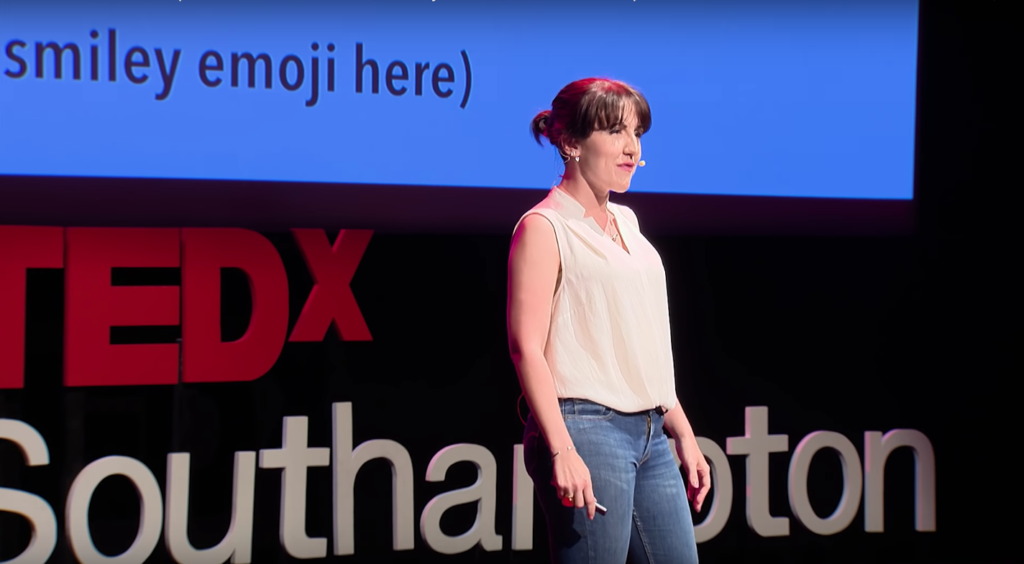There are several articles and studies out there showcasing the power of social media. However, sometimes it takes a practical and inspiring example to really understand how this platform can generate such a big impact. One such example can be witnessed in Stacey Heale’s powerful talk at TEDx. Although the subject of this talk is not directly on social media marketing – the main topic of this series of blog posts -, there are valuable lessons to be learned from Stacey that could be leveraged both by companies engaging in social media marketing and individuals concerned with personal branding and/or personal development.

Stacey Heale, a fashion academic and researcher, decided to get out of social media motivated by the feeling that she was losing a lot of time on useless videos and articles posted by her friends. The days following her decision to shut down all her social media accounts were very productive and she felt great, feeling very present at every moment of her day. However, shortly after she was negatively impacted by the news that her husband, Greg, was diagnosed with stage 4 cancer. It was already difficult to handle this situation on her own, but it started to get worse when she made the first few phone calls to family members and close friends. The problem was that they were getting very emotional over the phone, crying and even getting angry at the situation, which caused even more trauma for Stacey and Greg. The next form of sending out this bad news was through text messages, which might sound odd but it is a safe way to deliver the news from a certain distance and not feel the impact on the other side. The next day she decided to reactive her Facebook account and let more friends now through social media. Stacey and her husband chose an “appropriate” picture and the right message to post the news on her Facebook page. After making the post, Stacey started receiving several notifications of people sending her messages and these “beepings” did not stop for over a month. She was overwhelmed with the number of messages of love and support.
This was certainly great to help Stacey and her family through this difficult scenario. However, the bad news did not stop at her husband’s diagnosis. She realized that without a private health insurance plan the treatment cost £100,000 and she and her husband had neither the health insurance plan nor the money to pay the treatment. Therefore, she decided to start a Go Fund Me campaign to raise money for her husband’s treatment. Stacey felt very uncomfortable about asking for money through social media but she needed to put herself out there for her husband. She started the campaign, cross her fingers, shared a post on her Facebook, and luckily 24,000 people in 48 hours raised the £100,000. The total amount gathered was over £200,000.
She was so thankful that through social media she saw so much love that she decided to start speaking more about her husband’s disease. With a very positive repercussion, she started opening more about how she felt and even shared some stories such as when she caught herself sitting at her dog’s basket while having a panic attack when hearing her children screaming, or how she would always come to her parent’s house after leaving the hospital – when Greg was first diagnosed – and would take slipping pills with a bottle of wine to sleep in a fetal position. These are all very personal and delicate moments of her life, but she found out that by talking vulnerably she was not receiving pity from others but rather empathy and connection. So, she decided to carry on.
Stacey realized that “it’s really easy to want to crave someone else’s life when yours is just being smashed to pieces” but being honest and transparent with what you are sharing could potentially attract like-minded people how’s only concern is to help and send love. She mentioned that there is a saying that it takes a village to raise a child and she thinks it takes a city to live through cancer, and she constructed her city through social media.
Stacey and Greg’s story illustrates how social media is powerful in attracting people with similar interests, believes, and even values. Companies should leverage this learning to understand that even the company’s values should be stated or transmitting somehow in their posts, so it can resonate with others and potentially attract a bigger audience. The couple’s story also demonstrated how being transparent and sharing what might seem as vulnerabilities could have the opposite effect of what one could first imagine. Companies should also leverage this learning to understand that problems or negative press are always good opportunities to be transparent and take responsibility, let your customers/followers understand what happened, and learn from it. Bottom line, social media is a transformative tool that should be leveraged with transparency so you can attract other users that really resonate with your beliefs.